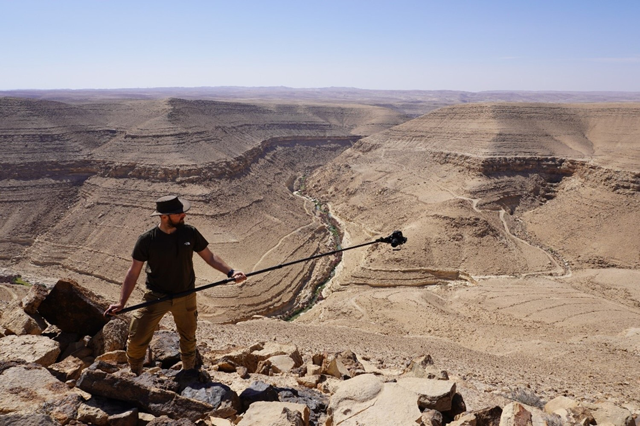AMMAN — Archaeology has become more interdisciplinary science so scholars specialised in environmental sciences became involved in research of archaeological sites.
Earlier research paradigms that saw past societies either as victims or destroyers of environmental conditions have given way to perspectives that place humans and the environment within socio-natural systems that seek a state of equilibrium as they consistently adapt to natural and human-induced impacts, Professor Benjamin Porter from Berkeley University explained.
Porter added that archaeological research has concentrated on the participation of expansive political polities in socio-natural systems in order to examine the impacts that the development of intensified agrarian economies had on landscapes and how the environment’s response to such human-induced changes created a feedback loop that promoted or limited producers’ successes.
"Still other scholars have discovered that a society needs not be organised as an empire or a state to participate in socio-natural systems. Less expansive societies, such as the Pueblo societies of the American Southwest can make iterative impacts on their landscape through agriculture, irrigation and herding."
"Once the degradation of naturally available resources [e.g., water, grasslands, soils] reaches a particular limit, or less optimal climatic conditions persist, such small-scale societies must adapt to new conditions or abandon the landscape for more ideal conditions," Porter underlined.
The professor noted that the relatively small size of the Al Mujib settlements should therefore not lead one to assume a priori that early Iron Age producers were less abusive toward the landscape. Rather, such impacts should be investigated using whatever direct and indirect evidence is available.
Archaeological excavations in different settlements indicate that agriculture and pastoralism (or, agro-pastoralism) was the principal mode of production, Porter said, adding that faunal and paleobotanical evidence from Al Mudayna Al Aliya reveals that producers emphasised goats over sheep, and barley over wheat, an arrangement often chosen by producers subsisting in semi-arid conditions
"The extent to which this agro-pastoralist system was intensified during the Early Iron Age is a key question for determining the short-term and long-term impacts on the landscape."
"Geographers have observed that the intensification of agricultural economies in marginal zones can lead to the over-exploitation of naturally available resources and landscape degradation through practices such as overgrazing, aggressive planting, and irrigation," Porter underlined.
Such corrosive activities can leave signatures in the archaeological and environmental record that are available for analysis.
The fact that preindustrial producers living on the Eastern Karak Plateau in the millennia before and after the Early Iron Age developed agro-pastoralist economies suggests that economic intensification was possible here despite the semi-arid steppe conditions.
Landscape and settlement excavations have determined that the Eastern Karak Plateau witnessed five periods of agricultural intensification, albeit different in scale and organisation.
During the Early Bronze Age II-III period (c. 3100-2300 BC), nucleated agro-pastoralist settlements were larger compared to the Early Iron Age, said Porter.
The professor added that four later episodes, in the Iron Age IIC (the 7th-6th centuries BC), Nabataean-Early Roman (c. 100 BC-106 C), Late Roman through Byzantine (c. 284-551 CE) and Middle Islamic (c. 1250-1516 CE periods, occurred while the Karak Plateau was under the sway of external empires, the Assyrian, Roman, Byzantine and Mamluk Empires, respectively, the professor explained.
He added that in each instance, settlement is characterised by a combination of military forts and dispersed farmsteads and towers extending to the very edge of the desert margins. Evidence for agro-pastoralist practices reveals a diverse food economy designed to feed a larger population as well as produce for regional markets.
"These earlier and later instances of economic development indicate that intensification was possible on the Eastern Karak Plateau under the right political and economic conditions. The organic and inorganic evidence recovered from Early Iron Age settlements, however, suggest that agro-pastoralism was substantially less intensive compared to earlier and later periods of settlement," Porter explained.
The professor added that the faunal evidence sampled from multiple buildings at Al MudaynaAl ‘Aliya reveal that domestic sheep (Ovis aries) and goat (Capra hircus) herds were limited in size.
This size was likely determined by households that balanced their short-term preferences for primary products such as meat with their long-term needs for secondary products such as milk and animal hair. The amount of available labour may have also determined herd size.
"The settlements likely followed a common pattern in pastoralist economies in which households cooperate by appointing a small number of individuals to manage herding duties," Porter said.
